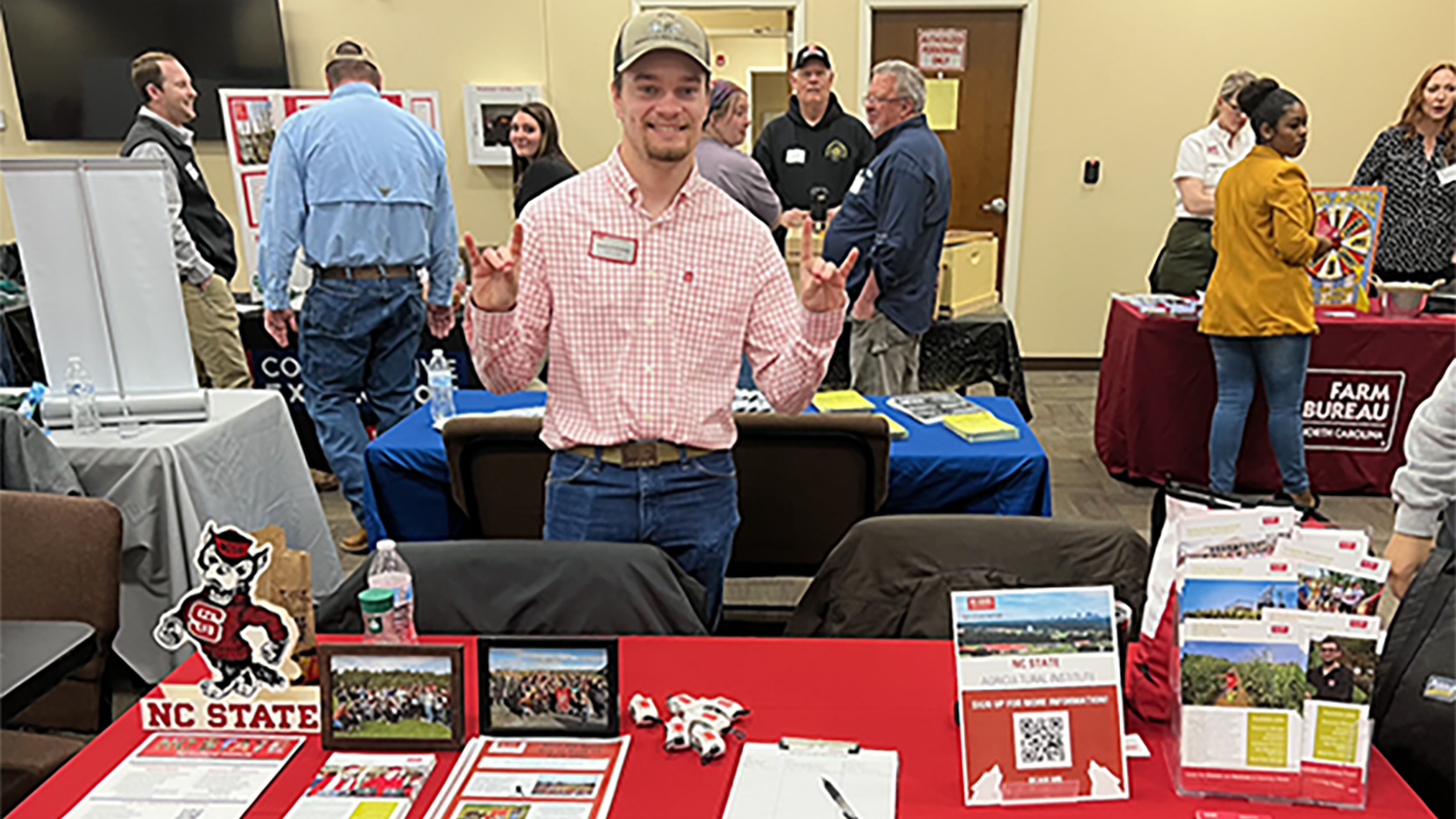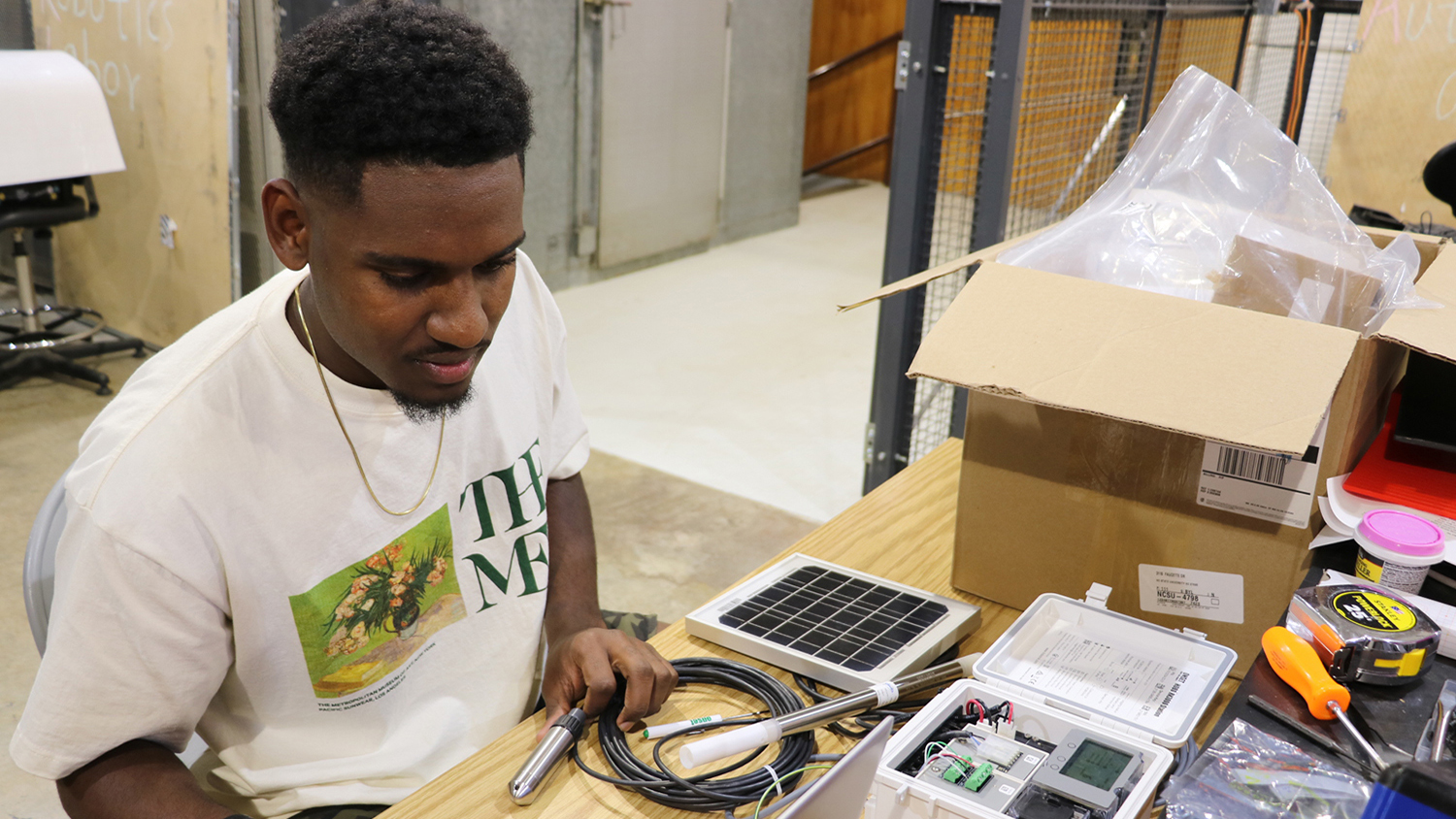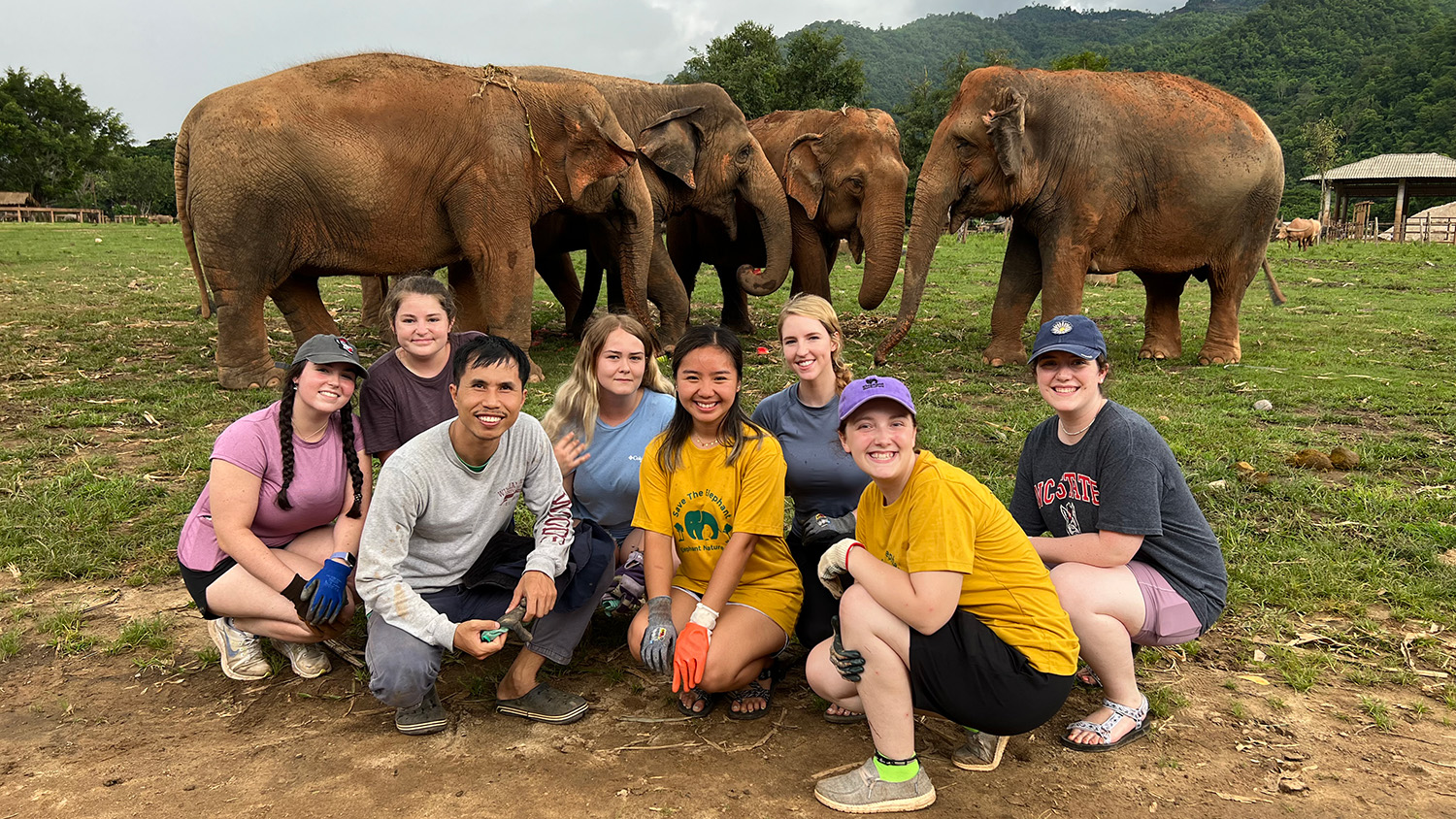Functional Aesthetics: CALS students create green roof at retirement community
At N.C. State University’s 23rd Annual Undergraduate Research Symposium in April, a project from four students in the College of Agriculture and Life Sciences was among the outstanding entries conveying the symposium’s message of how research at N.C. State contributes to the greater good of North Carolina and areas beyond. Department of Biological and Agricultural Engineering students Taylor Barto, Kathleen Bell, Kyle Halchin and Tiffany Preddy presented their work on the Carol Woods Green Roof Senior Design Project.
In their symposium poster, the four illustrated how they created and began implementation of designs for a green roof atop an addition to the Health Center Building at Carol Woods Retirement Community in Chapel Hill. Because there is a common room with access to that roof on the addition, the retirement community’s management wished to install a fully functioning green roof there. The new green roof will be used as an educational tool and a standard-of-living improvement for the residents.

The poster explains that green roofs are not only aesthetically pleasing, but also provide extra insulation, effective stormwater retention and management, and promotion of evapotranspiration and fire retardation, as well as a habitat for native insects and birds.
“With this project we ultimately want to provide our client with the aesthetic view they are looking for,” said Bell, a BAE senior from Raleigh, who hopes to become a field consultant in stormwater engineering. “We also want to provide our clients with stormwater management technology that will reduce peak flows and runoff.”
A prettier vista, reduced runoff and reduced peak flow are just a few among the advantages offered by the green roof, along with urban heat island mitigation (through reduction of surrounding temperature and reduced energy consumption) and extension of the lifespan of roofing material via the lessening of UV rays and mechanical breakdown.
Three designs were presented by the team to the Carol Woods community. The design chosen by the client includes 100 percent vegetation cover in the form of a pre-seeded sedum mat, growing media, an engineered drainage layer and a waterproofing membrane, along with river rock drain cover and edging and artwork to cover the roof’s air-conditioning unit.

“Green roofs do not have to be a level surface,” said Barto, a senior from Monroe, whose plans include attending graduate school in the BAE Department. “The substrate (soil) can be built up in areas of the roof where the structure can support it, providing more of a rolling landscape. The sedum plants are even able to grow in as little as one inch of substrate.”
One of the biggest challenges the team faced with this project was “communicating and coordinating between the different parties involved — client, vendors, engineering consultants,” said Halchin, a senior from Mebane, who hopes to become an environmental engineering field consultant.
But, he added, “along with that challenge comes one of the biggest rewards: When all of the parties have communicated/coordinated effectively and all of the details are coming together is when we have seen the most reward for our hard work.”

Construction was completed in late April. The team will now use water quality samples taken before and after construction to determine the stormwater-management effectiveness of the green roof.
Barto gave a special thanks to the team’s mentor, Andrew Anderson, and their Carol Woods contact, Robin Holmes, “for contributing so much of their efforts to making this project possible.”
It was Holmes who initially contacted the team’s sponsor, Dr. Bill Hunt of BAE, and proposed the green roof project that she wanted to implement, said Preddy, a senior from Oxford. Preddy plans to earn her professional engineer’s license and one day own a firm that serves urban and agricultural areas that promote wetland conservation and sustainable farming practices.
“From day one, Carol Woods has been extremely excited about the green roof project,” Preddy said. “It was such a joy to see that they were as excited as we were.”

And that excitement promises to continue. “This project will also serve as a trial green roof for their community. If this project is successful, they will implement more throughout their campus,” Bell said.
The annual Undergraduate Research Symposium seeks to highlight presentations of some of the finest work and thinking at N.C. State. The objectives are to demonstrate the importance of research in the undergraduate experience, to recognize the contributions made by undergraduates to research and to stimulate involvement by young people. Students present their contributions in poster format during two sessions. This year’s event included 68 entries from students in the College of Agriculture and Life Sciences. – Terri Leith
- Categories:


